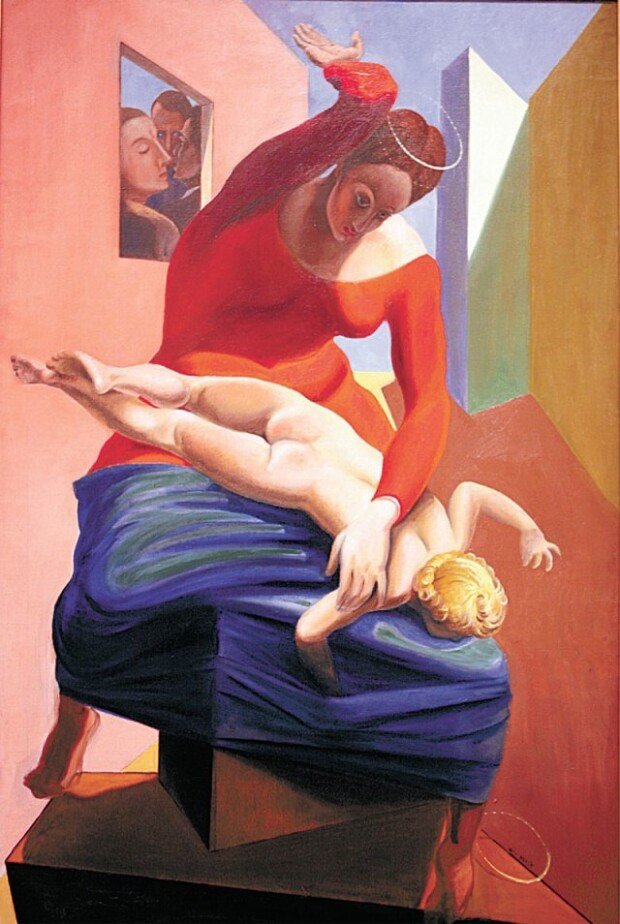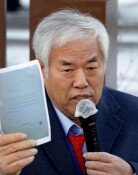Strict parenting
Strict parenting
Posted December. 23, 2021 08:01,
Updated December. 23, 2021 08:01

Virgin Mary and baby Jesus had been a popular theme for artists since early medieval ages. Generally, in the painting, a benevolent and motherly Mary holds the baby in her arms or looks after him. However, Max Ernst was different. Alas, the Virgin Mary is spanking her child! Why had the artist depicted the holy Mary and Christ in this blasphemous way?
Though one may assume otherwise, Ernst had been raised in a German family with strict Catholic beliefs. His parents devoted themselves to raise Ernst as a devout and talented individual. Ernst had not received official education as an artist but led Dadaism and surrealism. The first world war became a turning point for him. After four years of fighting for the German army, he became very crucial of Western civilization, tradition and thinking which he believed caused wars. This painting had been created while he was in Paris. It immediately triggered controversy on blasphemy when it was shown. Only his surrealist colleagues viewed the painting with humor. The Virgin Mary in the painting is relentlessly spanking her son, perhaps because he had done something dangerous or been naughty. There are three witnesses watching through the window: all of them leading surrealists who are poet Andre Breton, Paul Eluard and the painter himself. They do not seem troubled by Mary’s doings.
France is known for strict ways of parenting. Spanking had been tolerated until 2019, when a law was passed that made corporate punishment illegal. For Ernst, perhaps the French way of discipline had been a new source of artistic inspiration. If Virgin Mary had been a typical French mother, she would have punished her son, even if he was the son of God. Of course, deep inside she might have felt devastated, filled with bloody tears in the shade of her dress she wears.







